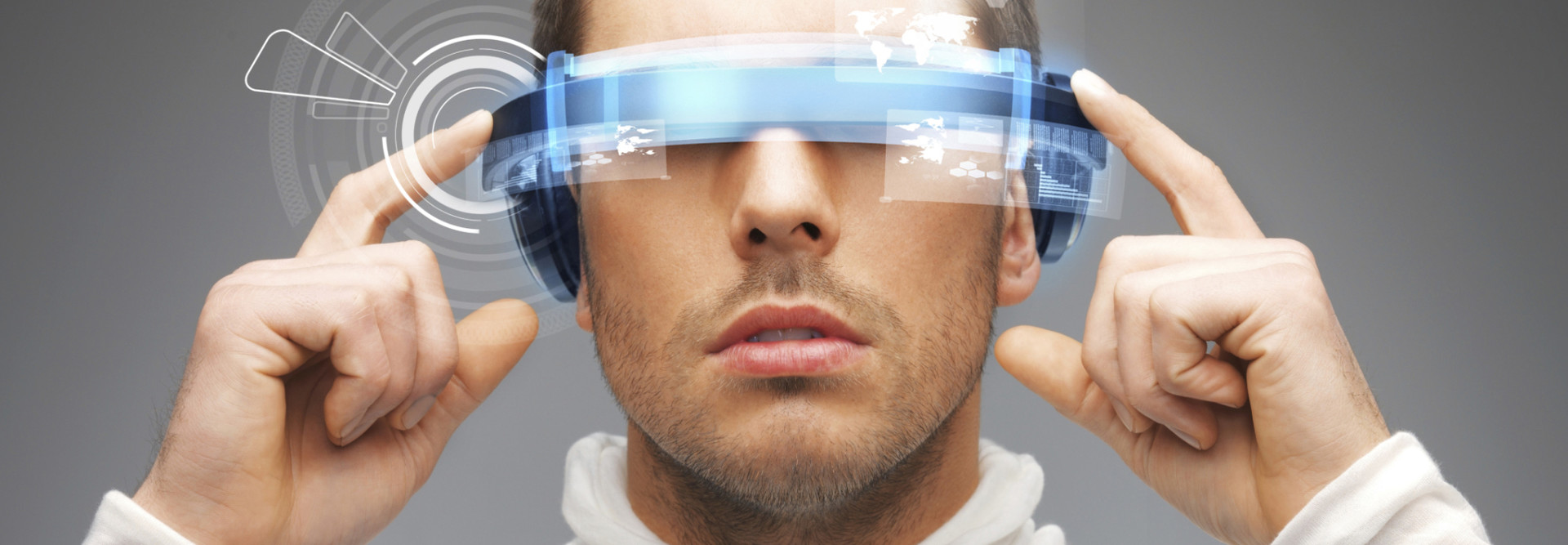Virtual Reality Makes an Impact on Campus
When it comes to a topic like virtual reality, a gamer like myself (yes, I admit it) can’t help but get pretty excited.
That’s not just because I anticipate lifelike graphics and full-motion controllers that will allow gaming like never before. VR technology on the whole has made some huge strides lately. While we may be worlds away from designing the sort of technology seen in The Matrix and Minority Report, some devices on the market today are pretty impressive.
Take Microsoft’s HoloLens Development Edition: Shipping sometime in the next couple of months, the wireless headset immerses wearers in a virtual experience without blocking out sights and sounds from their real-life surroundings. Users control the HoloLens through gaze, gesture and voice, interacting with digital content in the physical world.
Academics took their first crack at this advanced tech in July 2015, when Microsoft offered $100,000 and two HoloLens development kits to researchers who proposed the best applications for holographic computing. Announced in November, the award recipients and runners-up chose to study everything from mixed reality’s impact on the visually impaired to its potential use in vocational education.
Those projects are just kicking off, but others are well under way. Colleges and universities nationwide have found ways to leverage VR technology to improve athletic training, research programs and more.
Taking VR to the Turf
I’ve always heard that for athletes, the mental game is as important as the physical one. Football players at Stanford University in California are putting that theory to test using the STRIVR sports-based VR platform.
Worn between games or even between plays, the headset uses stationary cameras to offer a 360-degree view of the field. By analyzing first-person footage of actual plays, athletes gain a better understanding of the game so they can respond better in similar situations. Cardinals quarterback Kevin Hogan increased his pass completion rate by 12 percent via the STRIVR system.
Harnessing New Tools for Discovery
While Stanford leverages this technology on the field, other colleges and universities are incorporating VR into academic pursuits. Virginia Tech built a four-story VR Cube to house performance art pieces as well as help researchers visualize Big Data in new and innovative ways. Inside the massive facility, a team from the institution’s geography department combined atmospheric and ground data to recreate the sights and sounds of the EF-5 tornado that ravaged Oklahoma in May 2013.
Researchers at the University of Maryland perform similar data analysis and manipulation inside the Augmentarium, a space on the main campus at College Park that combines projection displays, augmented reality visors and more. The aim there is to give academics new insights into astronomy, biology and atmospheric and oceanic studies. The Augmentarium is even helping security analysts visualize and prepare for cyberthreats.
Looking to the Future
For sure, VR technology hasn’t yet reached every campus, but there could come a time when it’s seen as invaluable to higher ed. After all, state-of-the-art VR labs already differentiate forward-looking institutions. And expanding uses for the technology — such as VR-enabled campus tours for remote prospective students — could lead to valuable time- and cost-saving benefits.
That said, no college or university will reap the rewards without putting in the investment. Fluid VR imagery cannot be achieved without a complicated mix of hardware. A knowledgeable IT partner can help institutions understand the technology’s extreme processing, memory, storage and graphics card requirements. A partner can also keep an eye on the horizon, so colleges and universities can prepare for VR as it stands today and into the future.
This article is part of EdTech: Focus on Higher Education’s UniversITy blog series.










